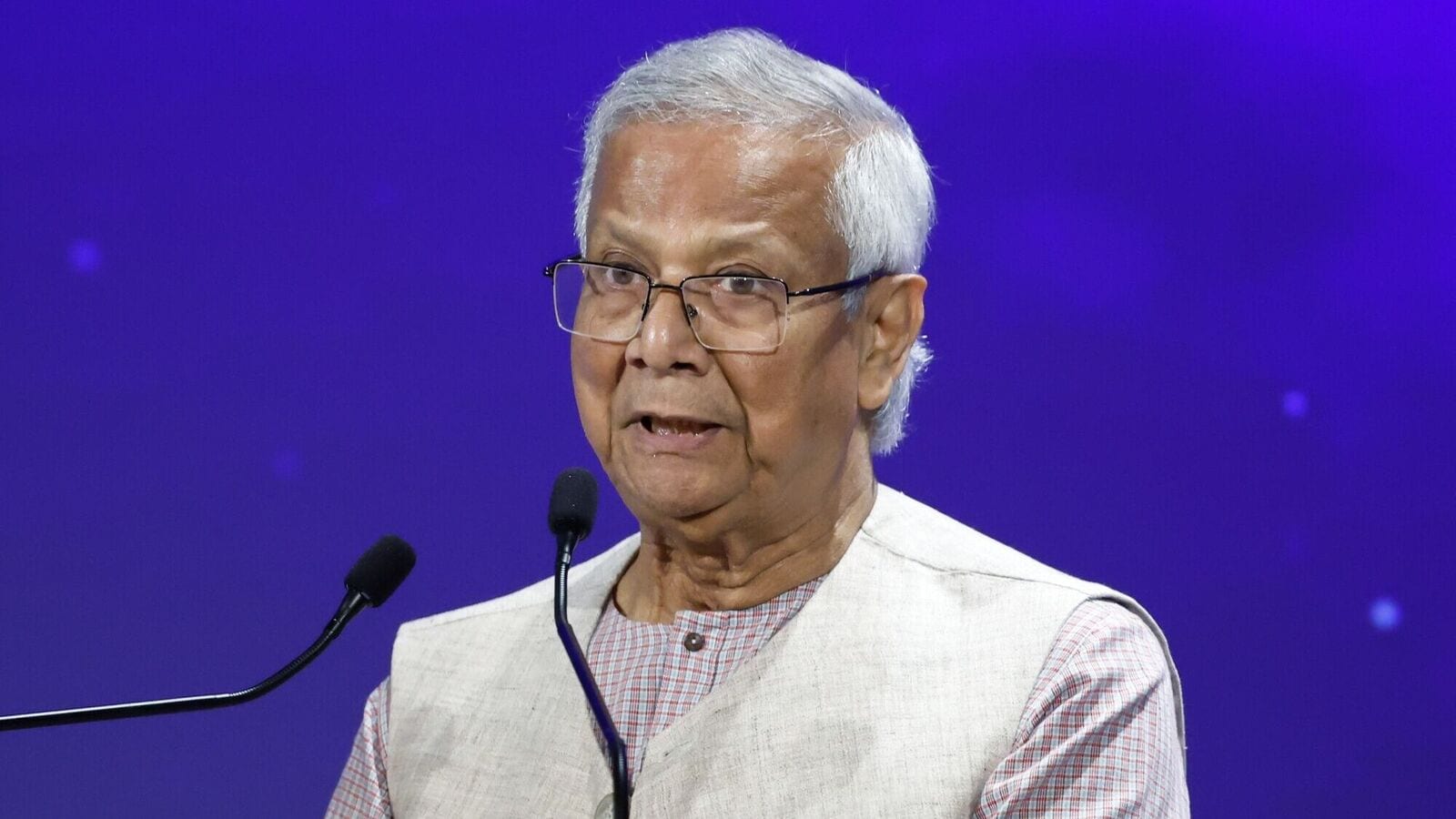
A New Chapter for Bangladesh: Introducing the Latest Banknotes
Almost a year after the uprising, the new Bangladesh administration has taken a significant step towards redefining the country’s identity. On Sunday, the government issued new banknotes, replacing the existing designs that featured the portrait of the late Sheikh Mujibur Rahman, the founding president of Bangladesh. This move marks a new era for the nation, as it shifts away from the dominant presence of Sheikh Mujibur Rahman’s image on its currency.
The decision to introduce new banknotes is a significant one, especially considering the country’s complex history and political landscape. Sheikh Mujibur Rahman, also known as the “Father of the Nation,” played a pivotal role in leading Bangladesh to independence from Pakistan in 1971. His legacy has been deeply ingrained in the country’s culture and politics, with his portrait featuring prominently on the nation’s currency. However, his tragic assassination in 1975, along with most of his family, has left a profound impact on the nation’s psyche.
The new banknotes, designed to reflect the country’s rich cultural heritage and natural beauty, will not feature any human portraits. Instead, they will showcase stunning images of Bangladesh’s natural landscapes and traditional landmarks. According to Arif Hossain Khan, a spokesperson for the Bangladesh Bank, “The new series and design will feature images of Hindu and Buddhist temples, as well as artwork by the late painter Zainul Abedin, depicting the Bengal famine during British colonial rule.” This move is seen as an attempt to promote a more inclusive and diverse representation of the country’s history and culture.
One of the new notes will prominently feature the national martyrs’ memorial, which honors the lives lost during the independence war against Pakistan. This poignant tribute serves as a reminder of the nation’s struggle for freedom and its people’s unwavering resilience. The introduction of these new banknotes is a testament to Bangladesh’s growth and evolution as a nation, as it continues to navigate the complexities of its past while embracing a brighter future.
The Bangladesh Bank has released notes for three of the nine different denominations, with the remaining denominations to be introduced in phases. The existing notes and coins will continue to be in circulation alongside the new notes, ensuring a smooth transition for the country’s economy. As the nation embarks on this new chapter, it is essential to recognize the significance of this move, which goes beyond mere aesthetics. The introduction of new banknotes is a powerful symbol of Bangladesh’s transformation, and its journey towards becoming a more inclusive and diverse nation.
A Look Back at Previous Patterns
Bangladesh has a history of changing its currency designs to reflect the shifting tides of politics. In 1972, after the country gained independence and changed its name from East Pakistan, the initial notes featured a map of the nation. Later, the design included the portrait of Sheikh Mujibur Rahman, which remained a dominant feature during his daughter Sheikh Hasina’s 15-year tenure as prime minister.
During the rule of the Bangladesh Nationalist Party (BNP), the notes featured historic and archaeological sites, highlighting the country’s rich cultural heritage. However, the latest move to introduce new banknotes marks a significant departure from the past, as the nation seeks to redefine its identity and move beyond the dominant presence of a single individual or party.
The Road Ahead
The introduction of new banknotes is a significant step towards promoting a more inclusive and diverse representation of Bangladesh’s history and culture. As the nation continues to navigate the complexities of its past, it is essential to recognize the importance of this move, which goes beyond mere aesthetics. The new banknotes are a powerful symbol of Bangladesh’s transformation, and its journey towards becoming a more unified and progressive nation.
In the midst of this transition, the country is also grappling with the challenges of its current political landscape. The Awami League, led by Sheikh Hasina, has been banned pending the trial of its leaders, and the former prime minister is currently in self-imposed exile in India. Despite these challenges, the introduction of new banknotes serves as a beacon of hope, reminding the nation of its resilience and capacity for growth and transformation.
As Bangladesh embarks on this new chapter, it is essential to recognize the significance of this move, which marks a new era for the nation. The introduction of new banknotes is a powerful symbol of the country’s transformation, and its journey towards becoming a more inclusive, diverse, and unified nation. With its rich cultural heritage, stunning natural landscapes, and resilient people, Bangladesh is poised to emerge as a beacon of hope and prosperity in the region, and the new banknotes are a testament to this promising future.
Key Takeaways:
- Bangladesh has introduced new banknotes, replacing the existing designs that featured the portrait of Sheikh Mujibur Rahman.
- The new banknotes will feature images of natural landscapes and traditional landmarks, including Hindu and Buddhist temples.
- The introduction of new banknotes marks a significant departure from the past, as the nation seeks to redefine its identity and move beyond the dominant presence of a single individual or party.
- The move is seen as an attempt to promote a more inclusive and diverse representation of the country’s history and culture.
- The existing notes and coins will continue to be in circulation alongside the new notes, ensuring a smooth transition for the country’s economy.
Frequently Asked Questions:
- What are the new banknotes in Bangladesh?
- Why has Bangladesh introduced new banknotes?
- What is the significance of the new banknotes?
- How will the introduction of new banknotes affect the country’s economy?
- What is the current political landscape of Bangladesh?
Bangladesh economy, Bangladesh news, Bangladesh banknotes, Sheikh Mujibur Rahman, Awami League, Bangladesh Nationalist Party, Zainul Abedin, Bengal famine, British colonial rule, Hindu temples, Buddhist temples, national martyrs’ memorial, independence war, Pakistan, India, Sheikh Hasina, Bangladesh politics, currency design, banknotes, denominations, economic transition, cultural heritage, natural landscapes, traditional landmarks, inclusive representation, diverse culture, national identity, transformation, growth, progress, hope, prosperity.
Content written by www.livemint.com














